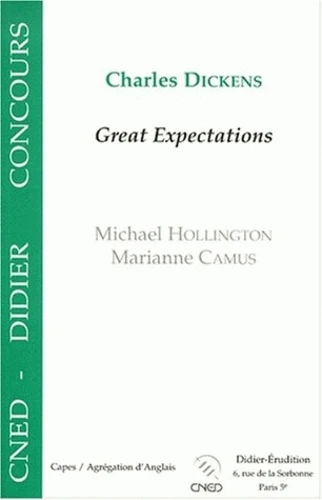Charles Dickens, "Great expectations"
Par : ,Formats :
Actuellement indisponible
Cet article est actuellement indisponible, il ne peut pas être commandé sur notre site pour le moment. Nous vous invitons à vous inscrire à l'alerte disponibilité, vous recevrez un e-mail dès que cet ouvrage sera à nouveau disponible.
- Nombre de pages160
- PrésentationBroché
- Poids0.245 kg
- Dimensions15,1 cm × 23,0 cm × 0,9 cm
- ISBN2-86460-371-3
- EAN9782864603719
- Date de parution01/11/1999
- CollectionCNED-Didier concours
- ÉditeurDidier-Erudition
Résumé
This book represents something of an experiment in male/female co-authorship. It approaches Great Expectations from a variety of perspectives, and studies in turn a number of key topics of the novel. These include: the role of the narrator Pirrip, the structure of the text as 'progress', the importance of Dickensian humour as the embodiment of a principle of excess, the novel's ironic commentary on the personal and public disasters of nineteenth-century life, and Dickens's powerful visual imagination, as this is expressed both in his vision of the phenomenal world and in his conception of human life as theatre. It then takes what is perhaps a more subversive look at Dickens's representation of women in the text which adopts a feminist point of view. In a concluding section, the two authors take time out to consider each other's contributions in an amicably critical way in order to stimulate the reader to arrive at some independent judgements of her or his own.
This book represents something of an experiment in male/female co-authorship. It approaches Great Expectations from a variety of perspectives, and studies in turn a number of key topics of the novel. These include: the role of the narrator Pirrip, the structure of the text as 'progress', the importance of Dickensian humour as the embodiment of a principle of excess, the novel's ironic commentary on the personal and public disasters of nineteenth-century life, and Dickens's powerful visual imagination, as this is expressed both in his vision of the phenomenal world and in his conception of human life as theatre. It then takes what is perhaps a more subversive look at Dickens's representation of women in the text which adopts a feminist point of view. In a concluding section, the two authors take time out to consider each other's contributions in an amicably critical way in order to stimulate the reader to arrive at some independent judgements of her or his own.

